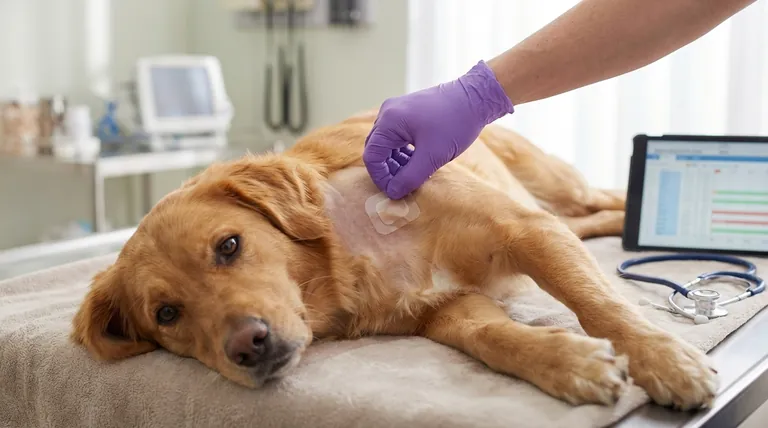When a pet is using a dog fentanyl patch, it's crucial to monitor for both expected and adverse reactions. Normally, the pet should appear relaxed, but warning signs like unresponsiveness or labored breathing indicate potential overdose or improper patch function. Environmental factors like heat sources or fever can dangerously increase absorption, while physical issues like peeling or damaged patches compromise safety. Immediate veterinary contact is essential if problems arise, and proper disposal of unused patches prevents accidental exposure.

Key Points Explained:
1. Expected vs. Adverse Reactions
- Normal response: Relaxation, mild sedation.
-
Warning signs:
- Unresponsiveness or extreme lethargy (may indicate overdose).
- Difficulty breathing (respiratory depression is a critical risk).
- Agitation or unusual behavior (paradoxical reactions).
2. Patch Integrity and Placement
- Proper adhesion: Ensure the patch is fully contacting the skin; peeling edges or loose patches can lead to erratic drug release.
- Damage risks: Never cut or fold patches in use—this alters dosage. Replace if torn or cracked.
3. Environmental and Physiological Risks
- Heat exposure: Avoid heating pads, electric blankets, or direct sunlight, as heat accelerates fentanyl absorption, potentially causing overdose.
- Fever: Monitor body temperature; elevated temps similarly increase absorption rates.
4. Emergency Actions
-
Immediate steps:
- If the pet shows severe symptoms (e.g., blue gums, collapse), seek emergency vet care.
- If the patch falls off, fold it sticky-side in and flush it—do not trash it (prevents accidental ingestion by others).
- Veterinary contact: Even after hours, reach out to the vet for guidance.
5. Safety Precautions
- Handling: Apply gloves when touching patches to avoid human exposure.
- Storage: Keep unused patches secured away from children/pets.
- Professional application: Only trained staff should apply patches to ensure correct dosing and placement.
By recognizing these signs and risks, pet owners can mitigate dangers while ensuring effective pain management. Always prioritize vet communication—early intervention prevents complications.
Summary Table:
| Warning Signs | Action Required |
|---|---|
| Unresponsiveness/extreme lethargy | Seek emergency veterinary care immediately. |
| Labored breathing | Contact vet ASAP—may indicate respiratory depression. |
| Patch peeling or damage | Replace patch; do not cut/fold. Fold used patch sticky-side in and flush for safety. |
| Agitation/unusual behavior | Monitor closely; consult vet if persistent. |
| Heat exposure/fever | Remove heat sources; monitor temperature—accelerated absorption risks overdose. |
Ensure your pet’s safety with expert guidance
Fentanyl patches require meticulous handling and monitoring. At Enokon, we specialize in transdermal pain management solutions for pets, offering:
- Reliable, vet-approved patches with consistent dosing.
- Custom R&D support for tailored pain relief formulations.
- Safety-focused protocols for distributors and veterinary brands.
Contact our team for bulk orders or technical advice on pet transdermal applications.
Visual Guide

Related Products
- Heat Relief Capsicum Patch for Lower Back Pain Relief
- Asthma Cough and Pain Relief Patch for Adults and Kids
- Far Infrared Deep Heat Relief Patches Medicated Pain Relief Patches
- Far Infrared Heat Pain Relief Patches Transdermal Patches
- Medical Cooling Gel Patches for Fever Cooling Patches
People Also Ask
- What types of pain can the Deep Heat Pain Relief Back Patch be used for? Targeted Relief for Muscles & Joints
- What are the possible side effects of the Capsicum HOT PATCH Adhesive Patch? Risks & Safety Tips
- How quickly does the Deep Heat Pain Relief Back Patch activate and how long does it provide warmth? Get 16-Hour Relief
- What precautions should be taken when using the Capsicum HOT PATCH Adhesive Patch? Essential Safety Tips
- What are the key features of the Deep Heat Pain Relief Back Patch? Get Up to 16 Hours of Drug-Free Relief
















